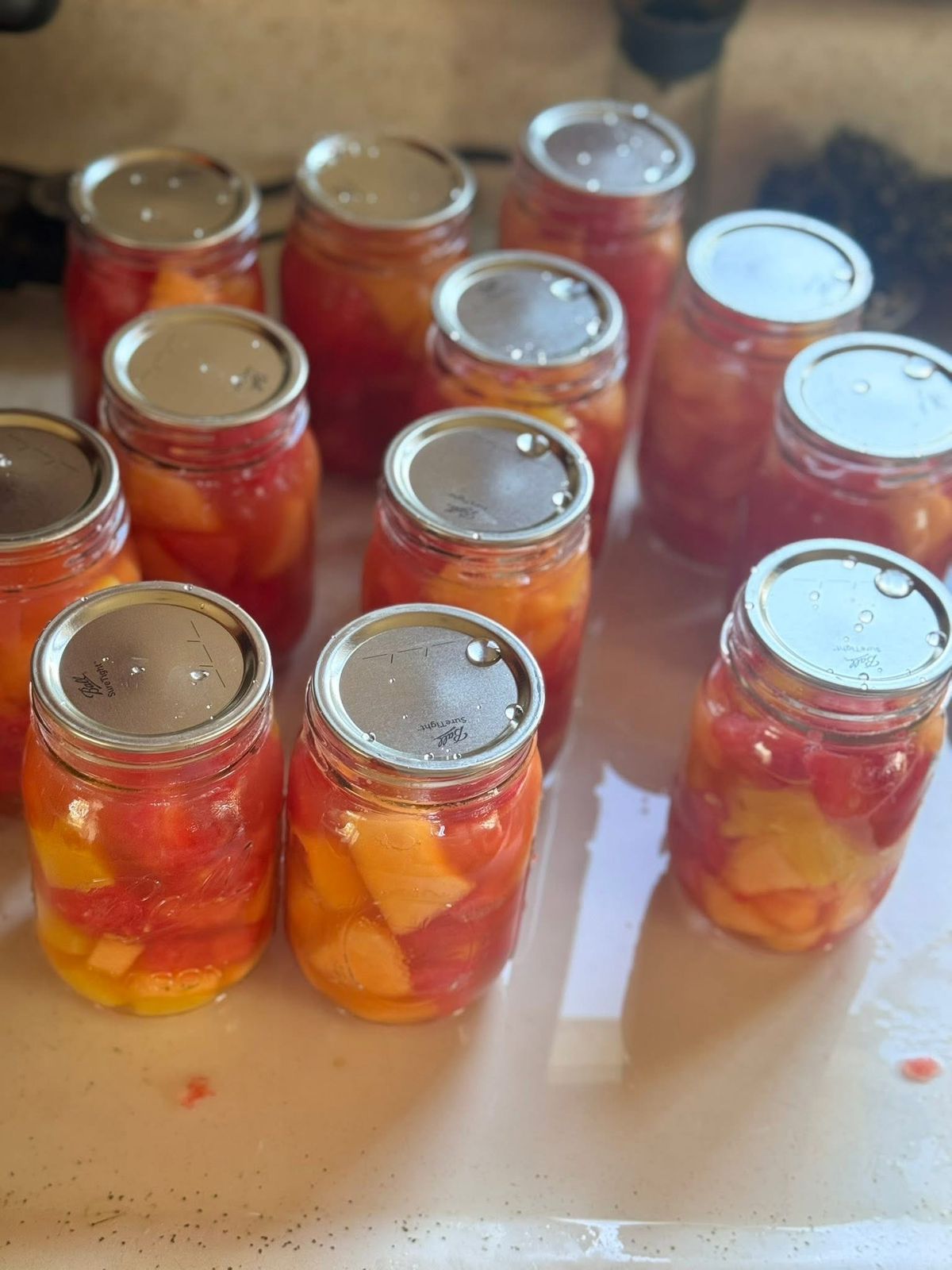Canning fruits at home is a wonderful way to preserve the sweetness of summer and enjoy it year-round. While peaches, apples, and berries are often the go-to choices, experimenting with watermelon, pineapple, and cantaloupe can add a refreshing twist to your pantry. These juicy, tropical-style fruits bring vibrant flavor and color to the table.
The process of canning may seem intimidating, but with the right steps, it’s both simple and rewarding. You’ll capture the fruits’ natural sweetness and create a treat that pairs beautifully with yogurt, salads, or as a light dessert on its own.
In this recipe, we’ll explore how to can watermelon, pineapple, and cantaloupe safely. You’ll learn what you need, how to prepare the fruit, and the best methods for achieving a shelf-stable, delicious result.
⏱ Cooking Time and Serving
-
Prep Time: 30 minutes
-
Cook/Processing Time: 20–25 minutes
-
Total Time: About 55 minutes
-
Serving Size: 1 cup fruit
-
Yield: About 6 pint jars
🍉🍍🍈 Recipe
Ingredients:
-
4 cups seedless watermelon, cut into 1-inch cubes
-
4 cups pineapple, peeled, cored, and cubed
-
4 cups cantaloupe, peeled, seeded, and cubed
-
6 cups water
-
2 cups granulated sugar (adjust to taste)
-
½ cup lemon juice (bottled, for consistency and safety)
-
Optional: 1 cinnamon stick or 2–3 whole cloves per jar for a spiced flavor
🥣 How to Make
-
Prepare jars and lids
-
Wash jars, lids, and bands in hot, soapy water.
-
Sterilize jars by boiling them in a large canning pot for 10 minutes. Keep warm until use.
-
-
Prepare the syrup
-
In a large saucepan, combine water, sugar, and lemon juice.
-
Bring to a gentle boil, stirring until sugar is dissolved. Reduce to a low simmer.
-
-
Prepare the fruit
-
Wash, peel, and cube the watermelon, pineapple, and cantaloupe.
-
Keep fruit pieces uniform in size for even canning.
-
-
Pack the jars
-
Carefully fill each sterilized jar with a mix of fruits (about 1 inch from the rim).
-
Pour hot syrup over the fruit, leaving ½ inch of headspace.
-
Remove air bubbles with a non-metallic spatula and wipe jar rims clean.
-
-
Seal and process
-
Place lids and screw bands on jars until fingertip tight.
-
Process in a boiling water bath canner for 20 minutes (adjust time for altitude if necessary).
-
-
Cool and store
-
Remove jars and let them rest on a towel undisturbed for 12–24 hours.
-
Check seals (the lids should not pop up when pressed).
-
Store sealed jars in a cool, dark pantry for up to 12 months.
-
📝 Notes
-
Watermelon has a high water content, so its texture softens after canning—it’s best enjoyed chilled or added to fruit salads.
-
Pineapple and cantaloupe hold their shape better and deliver a tangy-sweet balance.
-
Always use bottled lemon juice to maintain acidity and ensure safe canning.
-
For a lighter option, reduce sugar or try a honey syrup.
❓ FAQs
Q: Can I can just one type of fruit instead of mixing them?
Yes, you can can each fruit individually. Just follow the same syrup and processing method.
Q: Do I need to refrigerate the jars after sealing?
No, once sealed properly, the jars can be stored at room temperature. Refrigerate only after opening.
Q: How long do canned fruits last?
Properly sealed jars last up to 12 months. For best flavor, consume within 6–8 months.
Q: Can I use less sugar?
Yes, sugar can be reduced, but it helps preserve texture and flavor. Do not skip lemon juice—it’s required for safe acidity.
📊 Nutrition (Per 1 Cup Serving)
| Nutrient | Amount |
|---|---|
| Calories | 105 |
| Carbohydrates | 27 g |
| Sugar | 23 g |
| Fiber | 2 g |
| Protein | 1 g |
| Fat | 0 g |
| Vitamin C | 60% DV |
| Potassium | 8% DV |
(Values are approximate and will vary depending on fruit ripeness and syrup concentration.)
⚠️ Disclaimer: This recipe is intended for home use with proper canning techniques. Always follow safe canning guidelines. Eat in moderation, as the syrup adds sugar. If you have fruit allergies (such as to melon or pineapple), avoid this recipe.
